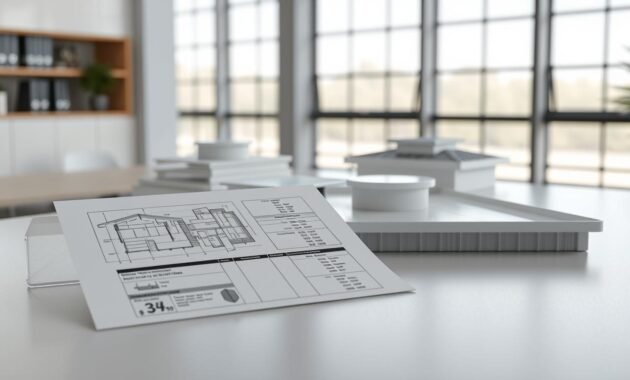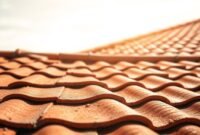Choosing a flat roof can be tough, with many options for roof space and materials. You might worry about leaks, quick wear, or poor protection. These issues are common for those looking at flat roofs.
Today’s flat roof materials have made big strides in roofing tech. They offer new ways to tackle old problems. These roofs work well for modern buildings, even in places like Australia and the southwestern U.S.
Knowing about flat roof construction can help you pick the best option. It’s about finding a balance between looks, function, and lasting quality. Whether it’s for your home or business, the right choice can make your roof a real asset.
Read also: Installing a Flat Roof Membrane
Understanding Flat Roof Systems and Their Basic Structure
Flat roofs are a smart choice for buildings. They’re not really flat but have a slight slope to keep water away. This design is key to their long-lasting performance.
These roofs have a small slope, about 1/4 to 1/2 inch per foot. This slope helps water drain off, keeping the building safe from water damage.
Key Components of Flat Roof Construction
- Roof deck (structural base layer)
- Vapor barrier
- Insulation layer
- Waterproof membrane
- Surface protection coating
Read also: Things to Know on How to Build a Deck Roof
Minimum Slope Requirements
Creating slope roofs needs careful planning. They should slope between 5 and 15 degrees. This angle is important to stop water from pooling and causing damage.
| Roof Type | Typical Slope | Water Prevention Method |
|---|---|---|
| Commercial Flat Roof | 1/4 inch per foot | Internal drains and scuppers |
| Residential Flat Roof | 1/2 inch per foot | Perimeter drainage systems |
Common Building Applications
Flat roofs are great for many uses. They work well in city buildings and modern homes. They’re perfect for holding equipment, solar panels, green spaces, and even places to relax. Their design helps prevent water damage, making them a popular choice for architects.
Built-Up Roofing (BUR): Traditional Flat Roof Construction
Built-up roofing (BUR) has been around for over a century. It’s a classic way to build flat roofs. It uses layers of bitumen and fabrics to make a strong, waterproof layer.
The strength of BUR comes from its layers. A BUR system has a few key parts:
- Base layer of insulation or cover board
- Multiple layers of bitumen
- Reinforcing fabric sheets
- Top layer of chipped stone or gravel
Building a BUR system means layering asphalt and fabrics carefully. The top layer of chipped stone helps by blocking UV rays and adding strength.
| BUR System Characteristics | Details |
|---|---|
| Average Lifespan | 20-30 years |
| Cost Range | $4-$13 per square foot |
| Typical Warranty | 10-20 years |
BUR systems are heavy but very good at keeping water out. They’re great for places with lots of rain or big temperature changes.
Modified Bitumen Systems: Modern Roofing Solution
Modified bitumen roofing is a big step forward in flat roof tech for local buildings. It was introduced in the 1960s. These systems offer better protection and flexibility than old roofing methods.

Installation Methods
Experts use different ways to put on modified bitumen roofs. Each method fits different project needs:
- Torch-down method: Uses direct heat for installation
- Peel-and-stick method: Easy to install with self-adhered membrane
- Hot-applied technique: Uses heated adhesives for strong attachment
- Cold-applied process: Uses special adhesive without heat
Material Composition
The roofing system has many layers for top protection. These single ply membranes include:
- Insulation layer
- Modified base sheets
- Modified bitumen membranes
- Adhesive layer
- Protective surfacing
Durability Factors
Modified bitumen systems are great for solar panels or long-term roofs. They last a long time because of their design:
| Durability Characteristic | Performance Metric |
|---|---|
| Average Lifespan | 20-25 years |
| Tensile Strength | High resistance to punctures |
| Weather Resistance | Excellent protection against storms |
| Energy Efficiency | UV reflective properties |
I’ve seen these roofing systems offer great performance, durability, and value for many projects.
EPDM Rubber Membrane: Single-Ply Technology
EPDM rubber membrane is a top choice for flat roofs that stop water from getting in. As a roofing expert, I’ve seen how it’s changed the game for buildings. It’s great for both business and home roofs.
Let’s talk about why EPDM is perfect for green roofs. This single-ply material has many benefits:
- It lasts 25-30 years, making it very durable.
- It can handle extreme weather well.
- It comes in different thicknesses (45-mil, 60-mil, 90-mil).
- It’s also a cost-effective option.
EPDM can be installed in several ways, depending on the building. You can choose from three main methods:
- Fully adhered systems (most secure)
- Mechanically attached systems
- Ballasted systems
| Membrane Thickness | Cost per Square Foot | Typical Lifespan |
|---|---|---|
| 45-mil | $9-$17 | 20-25 years |
| 60-mil | $7-$12 | 25-30 years |
| 90-mil | $10-$15 | 30-35 years |
EPDM stands out because it’s good for the environment. Its making process is eco-friendly, and it’s fully recyclable. This makes it a top pick for green building projects.
Cost Considerations and Long-Term Value
When planning a flat roof installation, understanding the financial landscape is key. Choosing the right materials can greatly affect your property’s value and performance over time.

The cost of flat roofs varies a lot based on the materials used. Let’s look at the costs to help you make a smart choice.
Initial Installation Expenses
Flat roof installation costs can range from $4 to $30 per square foot. Each material has its own price:
- Built-Up Roofing (BUR): $2.50 – $5.00 per square foot
- Modified Bitumen: $3.00 – $6.00 per square foot
- EPDM Rubber: $3.50 – $7.50 per square foot
- TPO: $4.50 – $8.00 per square foot
- PVC: $6.00 – $10.00 per square foot
Maintenance Requirements
Regular maintenance is essential to extend your flat roof’s life. Proper care can avoid expensive repairs and make the most of your roof space. If you plan to install solar panels or a rooftop garden, some roofs need more frequent checks.
Lifespan Expectations
| Roofing Material | Average Lifespan | Maintenance Complexity |
|---|---|---|
| BUR | 20-30 years | Moderate |
| Modified Bitumen | 20-25 years | Low |
| EPDM | 25-30 years | Low |
| TPO | 22-25 years | Low |
Think about long-term value, not just the initial cost. High-quality materials can save money by needing less maintenance and lasting longer. Remember, materials usually make up 60-70% of the cost, with labor and extras making up the rest.
Major Disadvantages of Flat Roof Systems
Flat roofs have their own set of challenges for homeowners and builders. They offer some benefits but also have big drawbacks. These can affect how well the roof works and how much upkeep it needs.
Drainage is a big problem with flat roofs. Unlike roofs that slope, flat roofs can’t keep water from pooling. This can lead to:
- Increased risk of water damage
- Accelerated material deterioration
- Higher likelihood of leaks
- Potential structural compromise
Another big challenge is how flat roofs handle heat. They soak up heat better than roofs that slope, making indoor temperatures swing more. This can really affect how comfortable and energy-efficient your home is.
| Roof Type | Heat Absorption | Drainage Efficiency |
|---|---|---|
| Flat Roof | High | Poor |
| Pitched Roof | Low | Excellent |
Maintenance for flat roofs is harder. Experts say you should check them every six months to avoid water damage and wear. The roof’s slope of 1:80 makes it hard to manage water.
Thinking about cost is also tricky with flat roofs. They might be cheaper to start with, but upkeep and repairs can add up. Traditional felt roofing lasts only 10-15 years, so you’ll need to replace it more often than other roofs.
Conclusion
Exploring flat roof construction shows us a modern roofing solution. It offers unique benefits for today’s homes. Single ply membranes and new materials change how we design roof spaces. They give architects and homeowners flexible choices that look good and work well.
Flat roofs are becoming more popular because they save money and look sleek. But, they can have problems like water pooling and need more upkeep. Choosing the right materials and getting expert help can solve these issues. Knowing about flat roof construction helps owners make smart choices for their buildings.
Success with flat roofs comes from good planning, expert advice, and regular care. Whether it’s for a business or a home, flat roofs are a flexible choice. They can make your property look better and work better. It’s important to pick the right roof for your needs with the help of experts.
Roofing technology keeps getting better, and flat roofs are leading the way. By keeping up with new ideas, you can create spaces that are efficient, stylish, and last long.




